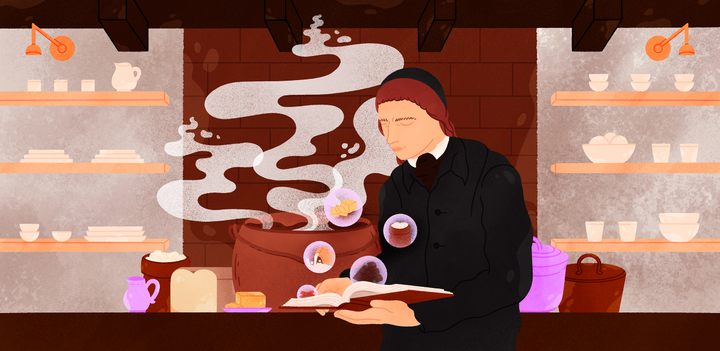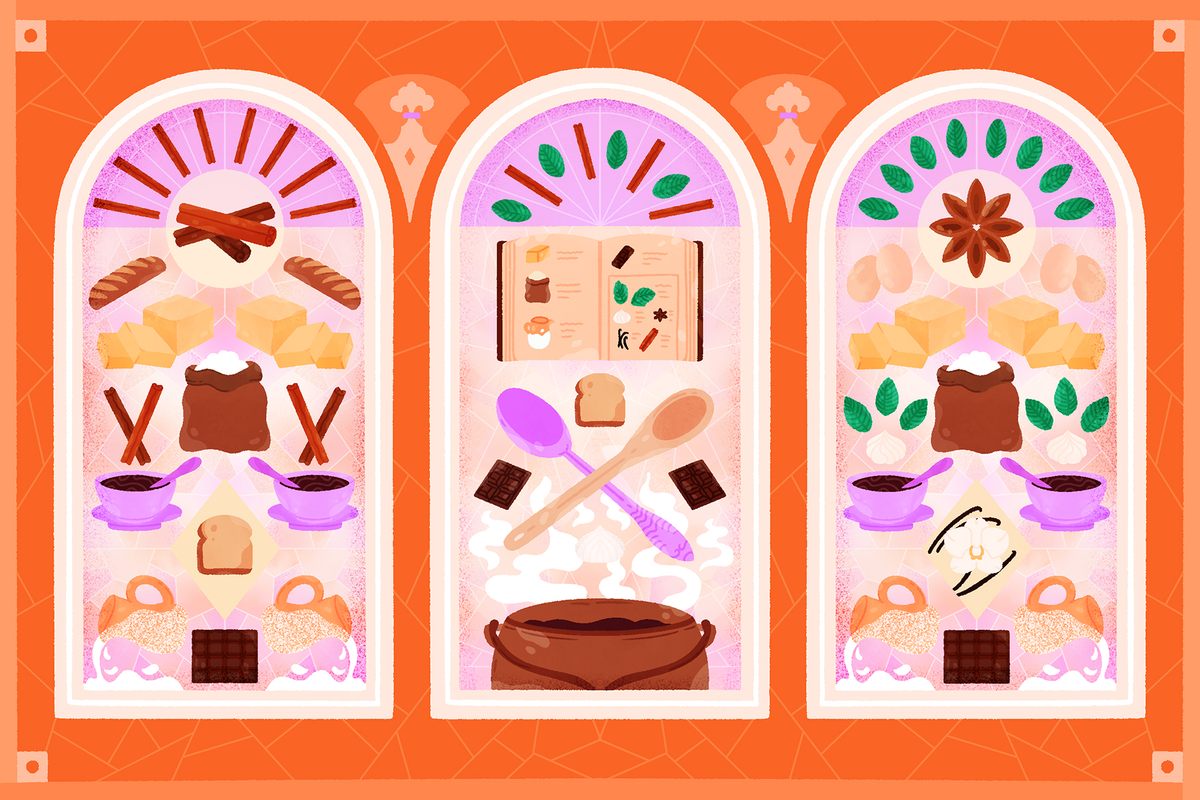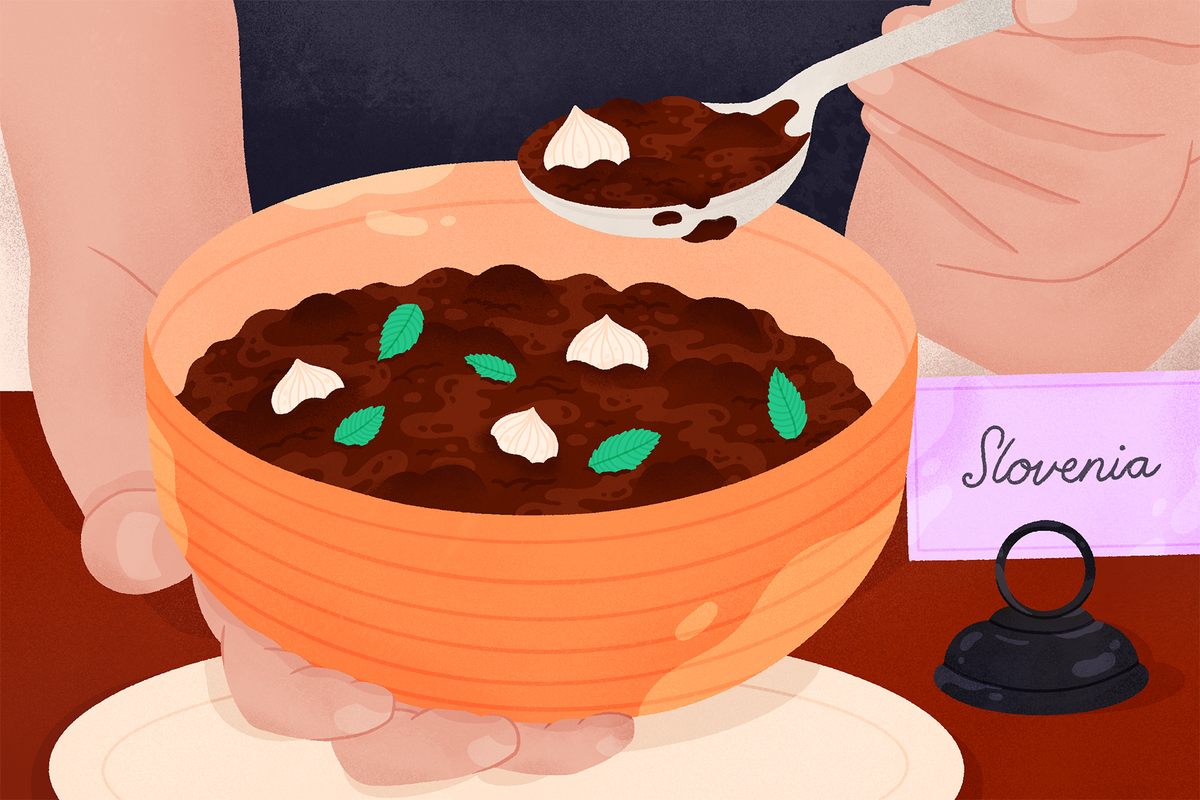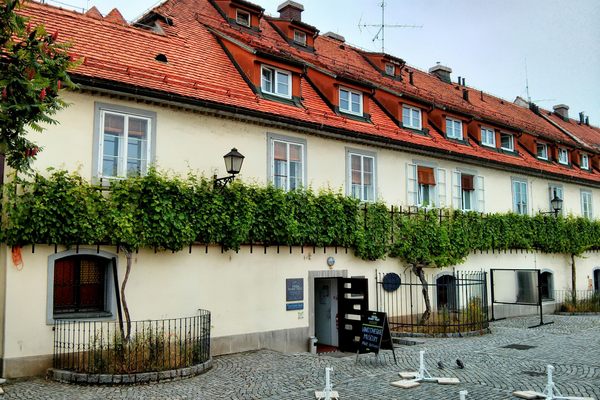

The 18th-Century Cookbook That Helped Save the Slovene Language
With 300 decadent recipes, a relentless priest united regional dialects and preserved a common tongue.
Straddling the imaginary border between the Balkans and Central Europe, Slovenia is home to two million citizens united by a common language. But this wasn’t always the case. For about six hundred years, the Slovene lands were the domain of the Habsburgs, with the occasional appearance by the French, Italians, Hungarians, and Serbs. The Slovene language—and with it the core of Slovene identity—should by all rights have disappeared long ago, subsumed by the much stronger languages and political powers surrounding it. The language survived thanks to the efforts of many people, from the 16th-century Protestants who first wrote it down to the 18th- and 19th-century intellectuals who coaxed it out of the church and spread it among the people. Among their arsenal of weapons: a cookbook, wielded by one relentlessly determined priest.
Valentin Vodnik was born in 1758 near Ljubljana, today the capital of Slovenia and then part of the Habsburg empire. He was a man of boundless energy, curiosity, and drive: Besides his work as a priest and later a high-school teacher and headmaster, he was fluent in half a dozen languages, wrote some of the first Slovene poetry, published the first Slovene newspaper, and began corresponding with intellectuals in Slovene. Vodnik’s mission was popularizing and elevating the reputation of the language at a time when educated Slovenes mostly spoke German, considering their native tongue to be the vernacular of poor illiterate farmers, unfit for polite society and incapable of expressing complex ideas.
“I see him as a quixotic figure, someone who didn’t let reality get in the way of his idealism,” says Dr. Andreja Legan Ravnikar, a linguist focusing on the history of Slovene. “He never gave up—the newspaper almost bankrupted him, but he went on to write technical books on everything from mining to midwifery, the first grammar book in Slovene, and the first dictionary.”
Vodnik was part of the Zois Circle, a group of intellectuals gathered around baron Žiga Zois, a central figure of the Slovene Enlightenment period who poured his wealth into the fostering of Slovene language and national identity.

After the first book in the Slovene language, a catechism, was published in 1550, written Slovene remained bound to religious writing and was completely disconnected from the spoken language by Vodnik’s time. He saw the dominance of German and strong influences of Italian, Hungarian, and Serbian in various regions as forces that threatened to disintegrate the language into mutually intelligible dialects. “If things continue as they are, we will soon see people from different parts of our land unable to understand each other; one will become Germanized, the other will be half Italian,” he warned in the foreword to his cookbook.
As compulsory public education was introduced in the Habsburg empire, the Zois Circle saw their opportunity to modernize and expand written Slovene into other genres. They were trying to break out of a Catch-22: There was no secular writing in Slovene due to the dearth of Slovene readership, but there could be no Slovene readership until they had something to read. And so they wrote—everything from plays and poetry to textbooks and technical manuals—conquering new linguistic territories along the way. Much of this work fell to Vodnik, whose command of the language made him a linguistic role model for his contemporaries.
Although he was a man of many talents, Vodnik had probably never cooked a meal in his life. Yet, in 1799, he published the first cookbook in the Slovene language, creatively titled The Cookbook. Featuring a whopping 300 recipes translated from German sources—ranging from chocolate soup and blancmange to smoked cow udders and steamed pigeons—the dishes reflected the upper-class Viennese cuisine of the time and had little to do with the flour-and-gruel fare familiar to most Slovenes. Contemporaries described Vodnik as good-natured, idealistic, and somewhat naive, which perhaps explains his baffling choice of recipes that most of his intended audience could neither afford nor read. But it’s possible Vodnik’s choice was more strategic: For him, the cookbook was a way of transmitting a language and a more progressive way of life, one that replaced Germanisms with Slovene words and gruel with boeuf royale.
“There isn’t a single traditional Slovene recipe in there,” says Dr. Janez Bogataj, a leading Slovene food ethnologist. “He wanted to educate people and offer them a better sort of cuisine, while also proving that the Slovene language is capable of expressing everything that other languages can.”
The cookbook’s foreword is half a lecture on the importance of healthy food and half a linguistic manifesto. Vodnik makes an impassioned plea for finding common ground among Slovenia’s disparate dialects: “We must find the Slovene words scattered around the land and assemble a pure Slovene language. Experience has taught me that few things don’t have a proper Slovene name somewhere … Why beg words from others when I can find them at home? Are we never going to mend our own language?”

Vodnik was true to his word: He was a purist, mercilessly hacking away at Germanisms that Slovenes had relied on for centuries and replacing them with local expressions collected with the help of informants from different regions. Failing that, he would turn to old Slovene expressions, or appropriate one from another Slavic language. This was not a case of making up a language—though he did also create a number of words from scratch as a last resort—but of carefully collecting and curating a vocabulary out of an abundance of dialectical words, creating a standard language that all Slovenes could understand.
“He wanted to distance our language from German and make it clear that we are something different, something independent and no less worthy,” says Dr. Legan Ravnikar. “In the kitchen, he introduced our modern words for butter, a slice of bread, a ladle, sauce, and countless more into the standard language. By writing them down he established a blueprint for later writers, and the words became part of our language.”
Even though the largely illiterate, poor Slovenes living in rural areas had little use for Vodnik’s decadent recipes, the book was popular with presbytery cooks working for village priests. These cooks were an important source of new cooking techniques and ideas for small village communities and, with their help, some of Vodnik’s simpler recipes and cooking methods found a wider audience.
In 1868, Vodnik’s recipes served as an important touchstone for Magdalena Pleiweis, who wrote The Slovene Cookbook. This new cooking guide, finally written by a woman who knew her way around the kitchen, included updated versions of Vodnik’s recipes and complemented them with the types of traditional Slovene dishes that he had pointedly ignored, such as buckwheat žganci—once traditional “poor man’s food”—and potica pastry, which comes in more than 100 regional variations.
Later editions were updated by Sister Felicita Kalinšek, who shared authorship with Pleiweis and became the sole author with the seventh edition in 1923. Kalinšek worked on updating the book until the 1970s, when she was succeeded by Sister Vendelina, who carried the title into the new millennium. The result is a lineage of cookbooks known simply as The Slovene Cookbook, now considered the authority on traditional Slovene cooking. At least one edition—usually known simply as “the Kalinšek” or “the Vendelina”— can be found in every Slovene kitchen. Some recipes that were clearly borrowed from Vodnik, like one for chocolate soup, can be traced through their many iterations from his cookbook through all the editions of The Slovene Cookbook to the present day.
“Vodnik’s cookbook had a big influence on what we know as Slovene cuisine today,” says Dr. Bogataj. “It was reprinted twice after his death, and writers like Pleiweis used it as a starting point, and looked to Vodnik for the correct Slovene words.”
Today, Slovenes speak around 50 local dialects, and it’s not unusual for two people from opposite corners of the country to have trouble understanding each other. But standard Slovene gives us shared words to fall back on, as well as a language used in politics, academia, and literary art. A long lineage of intellectuals worked through the centuries to protect and nurture the fledgling Slovene language, but few were as prolific or as prescient as Vodnik. Not one for false modesty, he signed the foreword to his cookbook, as well as other works, as Vodník, the added accent mark transforming his name to mean “leader.” After his death in 1819 Vodnik became the patron saint of the Slovene language and a hero to the nascent national movement that gained momentum after the Spring of Nations swept through Europe in 1848. The hundredth anniversary of his birth was celebrated in 1858 with three days of festivities.
When I learned about Slovene history in primary school, Vodnik seemed like just another tedious man clogging up history books. Now, as an immigrant whose own Slovene is falling by the wayside after more than a decade abroad, I appreciate his steadfast stubbornness and devotion to our fragile language. I despair at my garbled vocabulary, at the gaps in my once-so-proper Slovene grammar, and while I’m trying to reacquaint myself with the nuances of my language—so beautiful, so infuriatingly complex—I can’t lose myself in it the way I used to.
Instead, I go to the kitchen and pull out my copy of The Slovene Cookbook, a battered tome passed down through the generations of my family. I can hear Vodnik’s words echoing through the centuries: “Do your cooking the honor of speaking, understanding and preserving it in your own Slovene language … Why steal words? Isn’t the Slovene language capable enough?”
Today, I will start small. This is butter. This is a ladle. This is a pot.
Vodnik’s Chocolate Soup
Like many historic cookbooks, Vodnik’s recipes leave much open to interpretation. Luckily more reliable guidance is offered by Janez Bratovž, one of Slovenia’s top chefs, who reinterpreted the recipe in Dr. Bogataj’s 2019 book A Year of Flavors with V.V.
100 grams (7 tablespoons) butter
Half a vanilla pod
1 star anise
50 grams (~½ cup) cornstarch
6 deciliters (2 ½ cups ) milk
300 grams (1⅔ to 2 cups) dark chocolate
2 egg whites
60 grams (½ cup) powdered sugar
Mint leaves, for garnish
1. Melt the butter in a saucepan. Add the vanilla, star anise and cornstarch and cook over medium heat. While whisking, add the milk. Add the chocolate and simmer on low heat for 8 minutes. Once the soup is done, sieve it and keep it somewhere warm.
2. Whisk the egg whites, slowly adding powdered sugar. Pipe small mounds onto baking paper and bake them for three hours on 75° Celsius (167° Fahrenheit).
3. Pour the soup into a bowl and decorate it with meringues and mint leaves.
For the authentic Vodnik experience skip the vanilla, star anise, mind leaves, and meringues, instead flavoring the soup with cinnamon and pouring over a slice of toasted bread.
Gastro Obscura covers the world’s most wondrous food and drink.
Sign up for our regular newsletter.
























Follow us on Twitter to get the latest on the world's hidden wonders.
Like us on Facebook to get the latest on the world's hidden wonders.
Follow us on Twitter Like us on Facebook